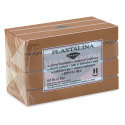Pottery and Sustainability: How To Make Pottery That Is Environmentally Friendly
Pottery is a beloved art form that has been around for thousands of years. From ancient civilizations to modern-day pottery studios, the creation of pottery has been an integral part of human history. However, traditional pottery production can have a significant environmental impact. In this blog, we will explore the topic of pottery and sustainability, and how to make pottery that is environmentally friendly.
The Environmental Impact of Pottery Production
Pottery production has been traditionally energy-intensive. The process of making pottery involves mining and processing clay, using large amounts of water, and firing the pottery in a kiln. These steps are not only energy-intensive but also produce pollutants and waste.
The mining and processing of clay can lead to the destruction of natural habitats and the displacement of wildlife. The use of large amounts of water in the studio can lead to water scarcity, especially in areas where water is already scarce. And the firing of pottery in a kiln requires large amounts of energy, often generated by fossil fuels, which contributes to climate change.
Ways to Make Pottery More Sustainable
However, there are many ways that potters can make their craft more sustainable. Some of the ways include:
- Using local and natural materials for clay and glazes: By sourcing clay and glazes from local sources, potters can reduce the environmental impact of transportation. Additionally, using natural materials can reduce the use of chemicals in the studio.
- Using renewable energy sources for kiln firing: By using alternative energy sources, such as solar or wind power, potters can reduce their carbon footprint.
- Implementing recycling and waste reduction practices in the studio: Potters can reduce the amount of waste produced in the studio by recycling materials and implementing waste reduction practices.
- Exploring alternative firing methods, such as raku and pit firing: Alternative firing methods can reduce the energy consumption of traditional kiln firing.
- Incorporating upcycling and repurposing in pottery making: Potters can reduce their environmental impact by using materials that would otherwise be thrown away, such as old newspapers and cardboard, in their pottery making.
Examples of Sustainable Pottery Practices
There are many potters and studios that are leading the way in sustainable pottery. For example, some potters use solar-powered kilns and source clay from local sources, while others use alternative firing methods such as raku and pit firing. These sustainable practices not only reduce the environmental impact of pottery production but also add a unique character to the pottery.
Conclusion
Pottery production has been traditionally energy-intensive, but with a little effort, potters can reduce their environmental impact. By using local and natural materials, using renewable energy sources, implementing recycling and waste reduction practices, exploring alternative firing methods, and incorporating upcycling and repurposing in pottery making, potters can make their craft more sustainable. Not only will this help to protect the environment but also will add unique character to their pottery.
Potters who are interested in learning more about sustainability in pottery can find additional resources online, including websites and forums dedicated to sustainable pottery practices. By making changes in their own practices, potters can help to create a more sustainable future for the craft of pottery.




